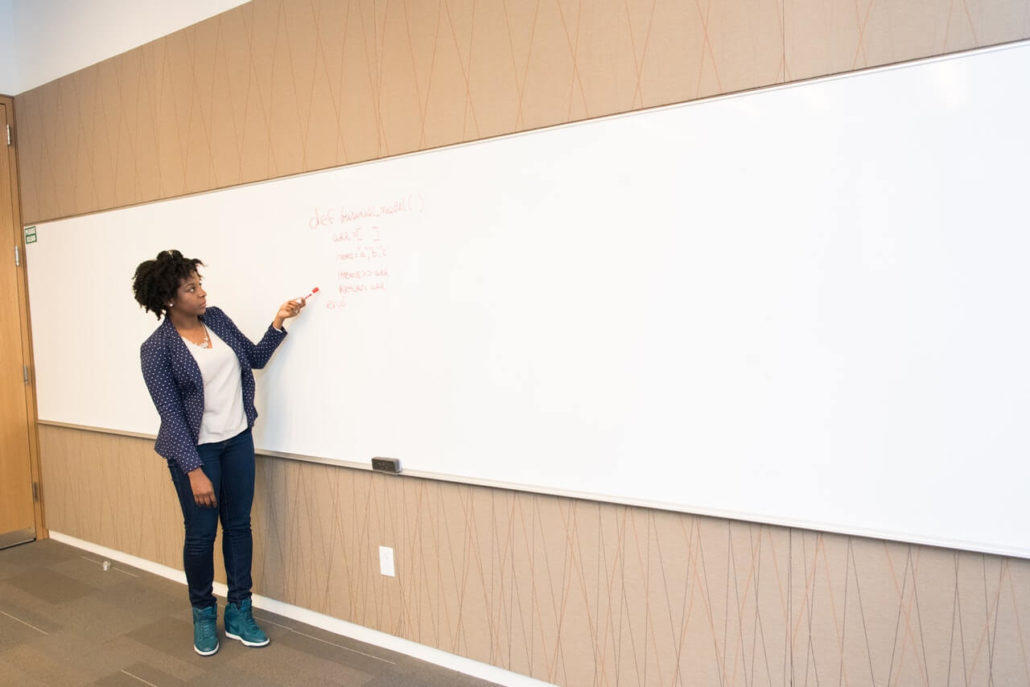You have a conversation class starting in a few minutes. But after a second glance of the material and topic, you determine it might be a little difficult for your class members.
And, if you’re like me, there are times when you have just a few minutes to prepare a lesson based on an article or topic from an ESL conversation/discussion book.
What do you do? Today’s blog will give you an option for such situations when teaching English. And, the following breakdown will help you visualize how it works.

1. Activate Schema
One of the best ways I meet this situation is to write the topic on the classroom whiteboard.
Then ask your students what they know about it. You can ask strategic questions to guide them toward the specific concept.
Or, you can leave it wide open for whatever may come to their minds. Once you have some ideas, you can whittle them down to focus on the topic at hand.
For example, your topic is noise pollution. You can start from broad to narrow by asking class members what they know about pollution. You can also give an example of pollution or even an image. Give them a free hand to answer.
One of your roles is to keep the answers on track and brief. After several responses, draw attention to noise pollution. One way you can do that is by asking them about different types of pollution.
The idea is to let them come up with the answers so as to stimulate their thinking. If you’re able to, you might want to start writing the answers where the class can see them. In a discussion of noise pollution, certain words or phrases are going to come up. That leads to the next step.
Enrol in our 250-hour TESOL diploma – more comprehensive than a CELTA!

2. Brainstorm Vocabulary
Naturally, in a talk about noise pollution, common vocabulary will be used. And that’s where you start.
Ask students to think of whatever words, idioms, or phrases that come to their minds covering this topic.
You may hear ideas such as eardrums, hearing damage, stress, laws against, loud music, blaring horns, cellphones on trains, people yelling at each other, and so on.
As class members share their vocabulary items, try to write them on a board for all to see.
If you can’t write everything, write what you think would be helpful.
You can even show a few grammar points relative to the topic. Give the activity several minutes before ending it.
This is also an opportunity for you to introduce keywords, phrases, and idioms that might be useful during the talk. If you’re using textual materials, you can introduce key words from there.
When you finish, learners will have something to draw from as they participate in the conversation.
This helps reduce those blank faces when ESL learners talk about something they’re not familiar with. In this case, their schema is activated and they have the vocabulary to engage in the talk.
Activating schema related to a topic while building a working vocabulary resource for classroom reference prepares learners for the lesson. It’s now time to let the talking begin.
Teaching English Conversation Skills: Passing The Ball Activity
3. Conversation
Now that your class member minds are ready, they may have more confidence to participate. Not only do they have a better idea of what the topic is about, they have the words to use.
Begin with a question to start things off. It’s best to begin with an identification or recognition type question.
An example from our topic might be: What are some sources of noise pollution? Allow class members to respond. It’s very important for you to write keywords and phrases that you hear so they can be recycled during the talk.
This helps reinforce topical vocabulary and even structure. So, not only are the class members active, but you are too!
Follow up with more of a comprehension level question such as, “Which do you believe is the worst form” (in reference to the previous responses)? Or, “What health problems can result from noise pollution?”
As students answer, be sure to take note of any grammar or pronunciation issues that can be presented during the feedback time later.
After some responses or if the discussion begins to stall, try a higher-level question like, “What should be done to manage noise pollution in your community?”
And by the way, you should be pretty much quiet as you encourage the class members to talk. Your role is to be a facilitator not a dominator in this setting.
That’s why it’s good to have the class arranged in a circle, box, or other facing formation. This encourages them to speak to each other instead of look at the teacher as in traditional classroom seating arrangements.
Five Reasons Why The 70-30 Rule Is Useful In ESL Conversation Classes
4. Wrap Up, Review, Feedback, and Close
When you’ve reached a predetermined time, you can politely end the talk and transition to the wrap up.
Wrap Up
Here, you can inject closing comments about the topic and identify some insightful comments made by class members. This gives credit where credit is due. And, whether child or adult, they’ll probably appreciate it.
Review
Next, you can review vocabulary and expressions that came up. Give examples of their use and challenge learners to use them outside the classroom as they have opportunity. You can even give a writing assignment as a way to reinforce the discussion lesson.
Feedback
Now you can highlight recurring grammar, pronunciation, or word choice issues. Of course, you’ll want to keep the feedback anonymous—i.e. no names. We don’t want to shame anyone. We just want to use opportunities to learn from one another.
Close
Finally, you can close the lesson with a parting point to be remembered about the subject and the language. For example, regarding our topic, you could say:
“Well, we learned a little bit today about how noise pollution is a real threat to our health. And we used English to do that. Some of you had the language down and others a little difficulty.
But either way, you were able to use such phrases as “noise pollution hurts everyone,” “it isn’t healthy,” and “a neglected form of pollution,” to talk about something that affects us all.”
Final Thoughts
Speaking of wrapping things up and closing, this is where we’ll end this blog.
So, today, we shared activities you can use to prepare learners for conversation by activating their schema.
We also shared how to brainstorm vocabulary relative to the discussion topic. And, you’ve seen how the activities roll out in a conversation lesson.
Give it a try and tell us how it went.
Feel free to ask questions below or share what subjects you’d like to see covered in our blogs. Happy teaching!
Recommended Reading:
How To Encourage A Great Discussion In An English Conversation Class





